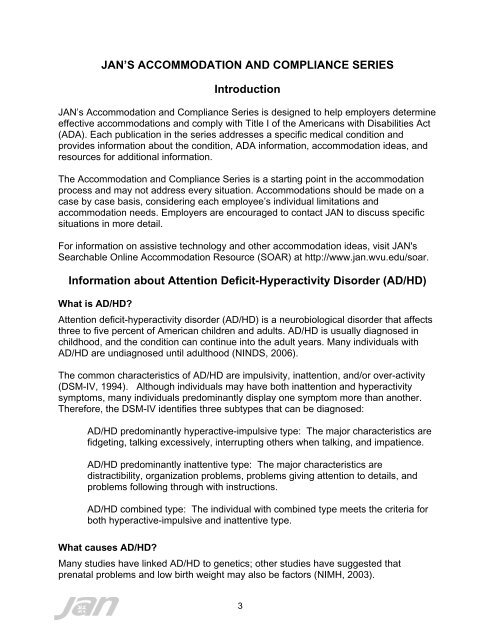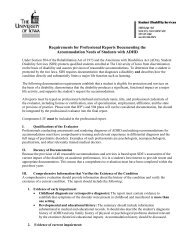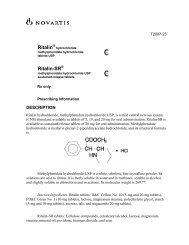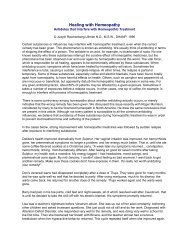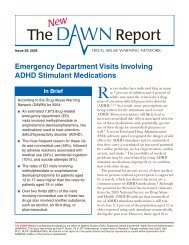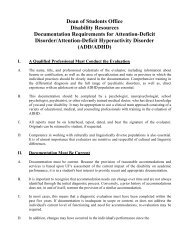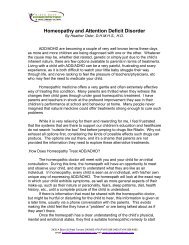Employees with Attention Deficit-Hyperactivity ... - ADHD Info Centre
Employees with Attention Deficit-Hyperactivity ... - ADHD Info Centre
Employees with Attention Deficit-Hyperactivity ... - ADHD Info Centre
- No tags were found...
You also want an ePaper? Increase the reach of your titles
YUMPU automatically turns print PDFs into web optimized ePapers that Google loves.
JAN’S ACCOMMODATION AND COMPLIANCE SERIES<br />
Introduction<br />
JAN’s Accommodation and Compliance Series is designed to help employers determine<br />
effective accommodations and comply <strong>with</strong> Title I of the Americans <strong>with</strong> Disabilities Act<br />
(ADA). Each publication in the series addresses a specific medical condition and<br />
provides information about the condition, ADA information, accommodation ideas, and<br />
resources for additional information.<br />
The Accommodation and Compliance Series is a starting point in the accommodation<br />
process and may not address every situation. Accommodations should be made on a<br />
case by case basis, considering each employee’s individual limitations and<br />
accommodation needs. Employers are encouraged to contact JAN to discuss specific<br />
situations in more detail.<br />
For information on assistive technology and other accommodation ideas, visit JAN's<br />
Searchable Online Accommodation Resource (SOAR) at http://www.jan.wvu.edu/soar.<br />
<strong>Info</strong>rmation about <strong>Attention</strong> <strong>Deficit</strong>-<strong>Hyperactivity</strong> Disorder (AD/HD)<br />
What is AD/HD<br />
<strong>Attention</strong> deficit-hyperactivity disorder (AD/HD) is a neurobiological disorder that affects<br />
three to five percent of American children and adults. AD/HD is usually diagnosed in<br />
childhood, and the condition can continue into the adult years. Many individuals <strong>with</strong><br />
AD/HD are undiagnosed until adulthood (NINDS, 2006).<br />
The common characteristics of AD/HD are impulsivity, inattention, and/or over-activity<br />
(DSM-IV, 1994). Although individuals may have both inattention and hyperactivity<br />
symptoms, many individuals predominantly display one symptom more than another.<br />
Therefore, the DSM-IV identifies three subtypes that can be diagnosed:<br />
AD/HD predominantly hyperactive-impulsive type: The major characteristics are<br />
fidgeting, talking excessively, interrupting others when talking, and impatience.<br />
AD/HD predominantly inattentive type: The major characteristics are<br />
distractibility, organization problems, problems giving attention to details, and<br />
problems following through <strong>with</strong> instructions.<br />
AD/HD combined type: The individual <strong>with</strong> combined type meets the criteria for<br />
both hyperactive-impulsive and inattentive type.<br />
What causes AD/HD<br />
Many studies have linked AD/HD to genetics; other studies have suggested that<br />
prenatal problems and low birth weight may also be factors (NIMH, 2003).<br />
3


